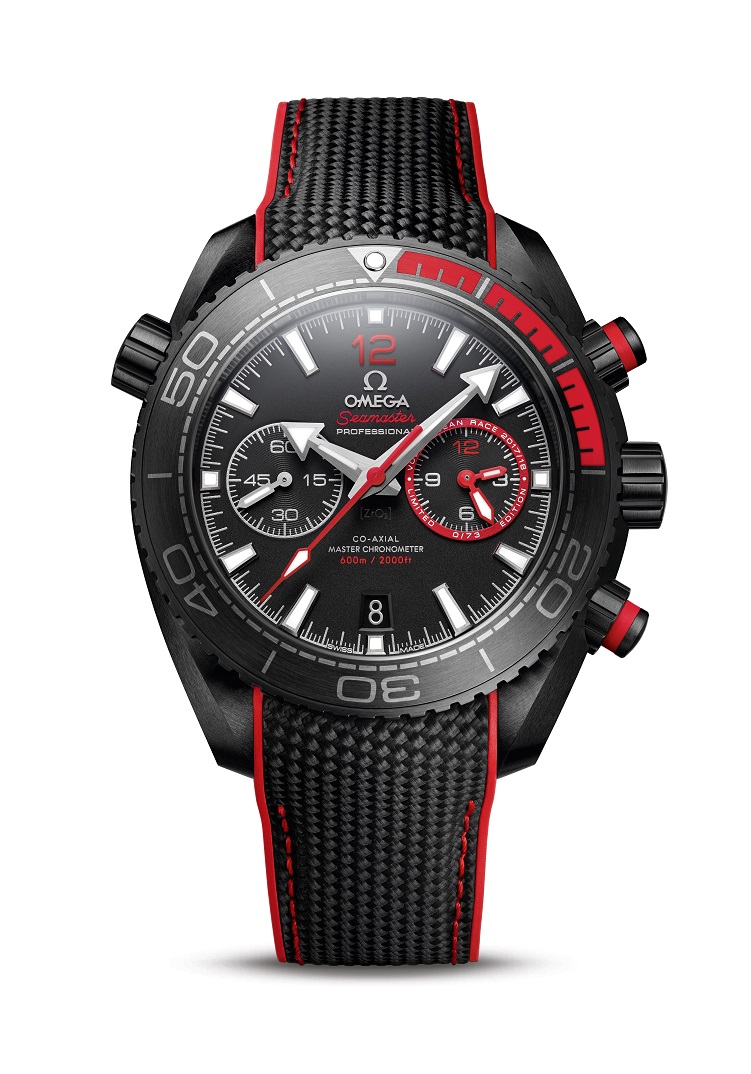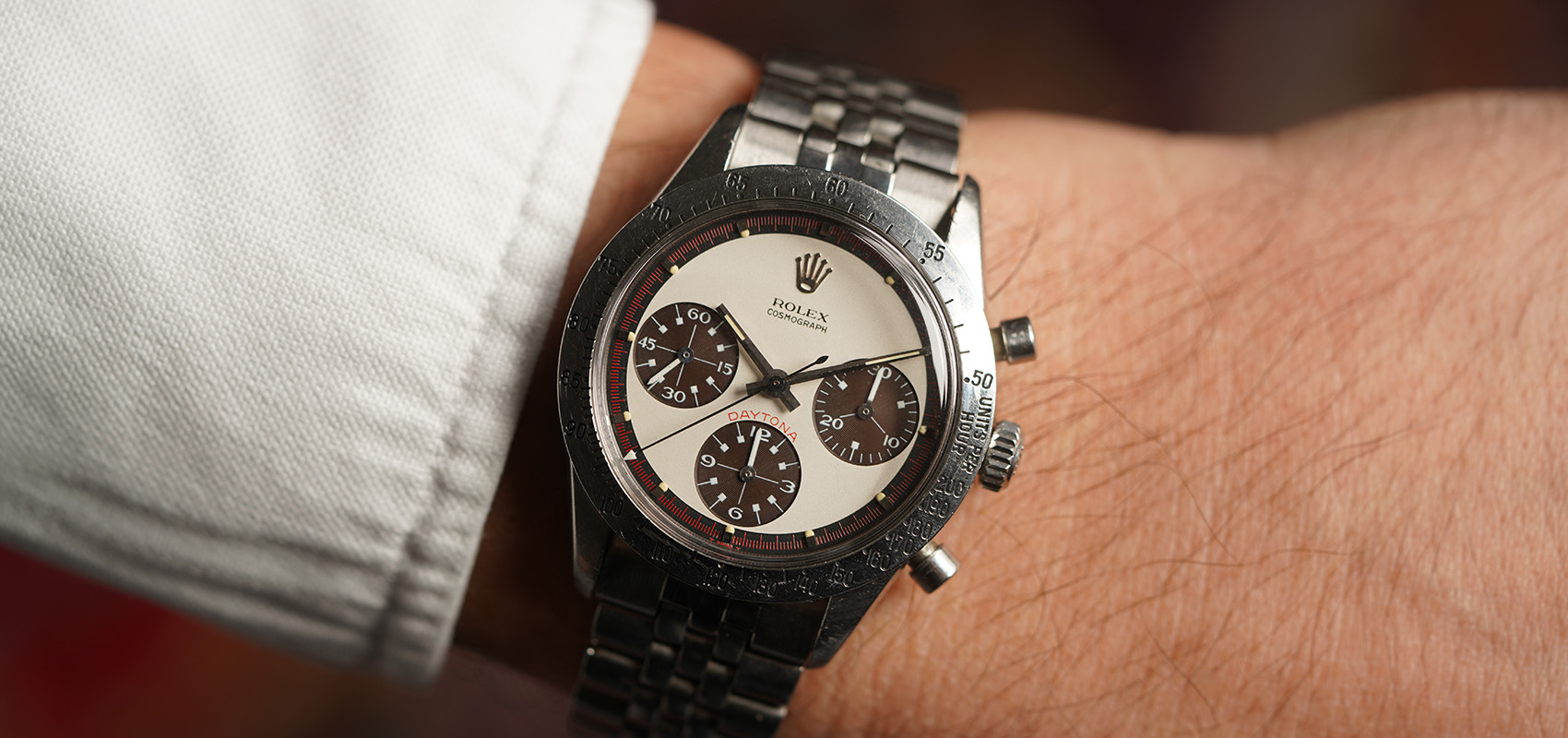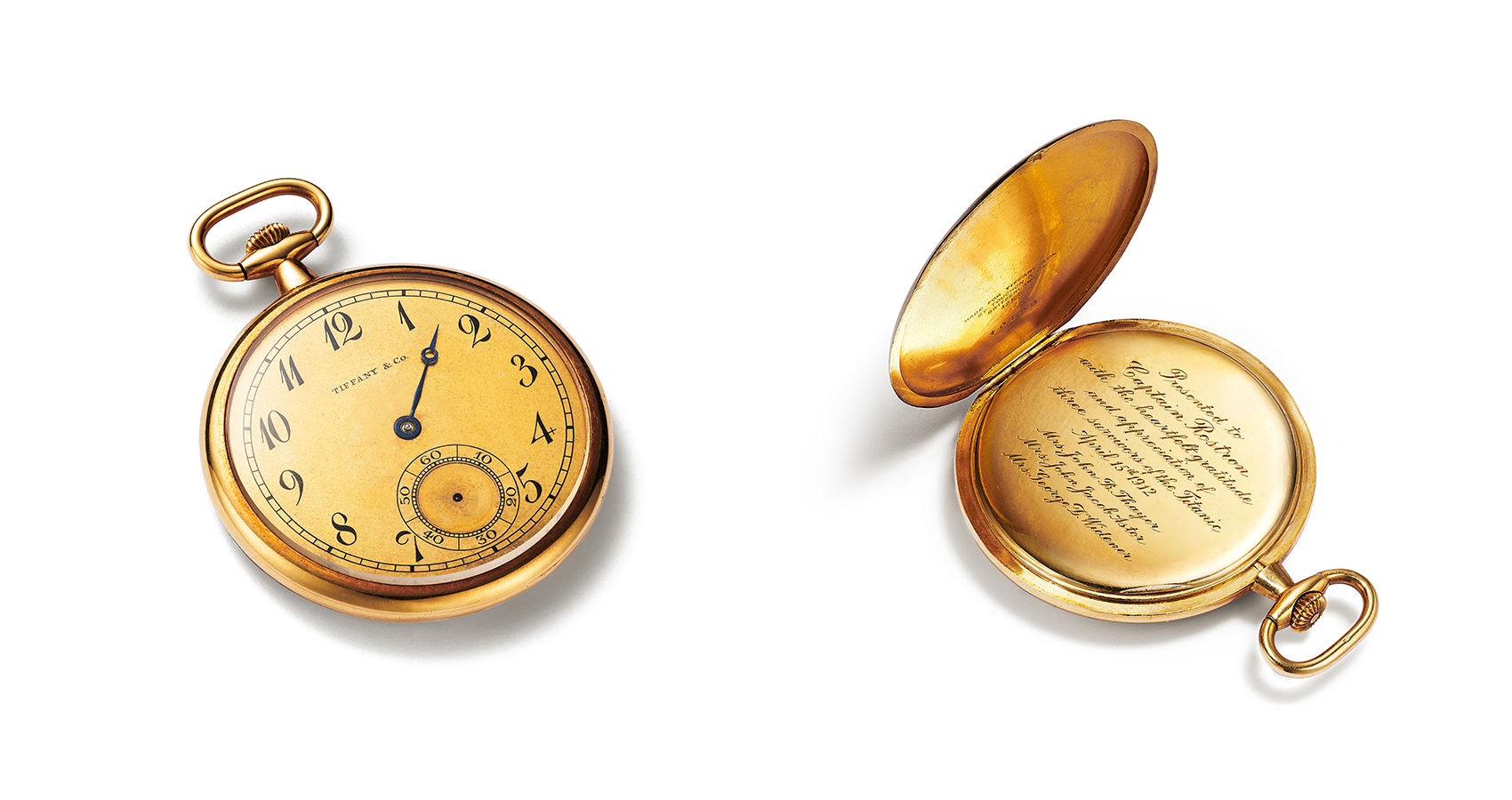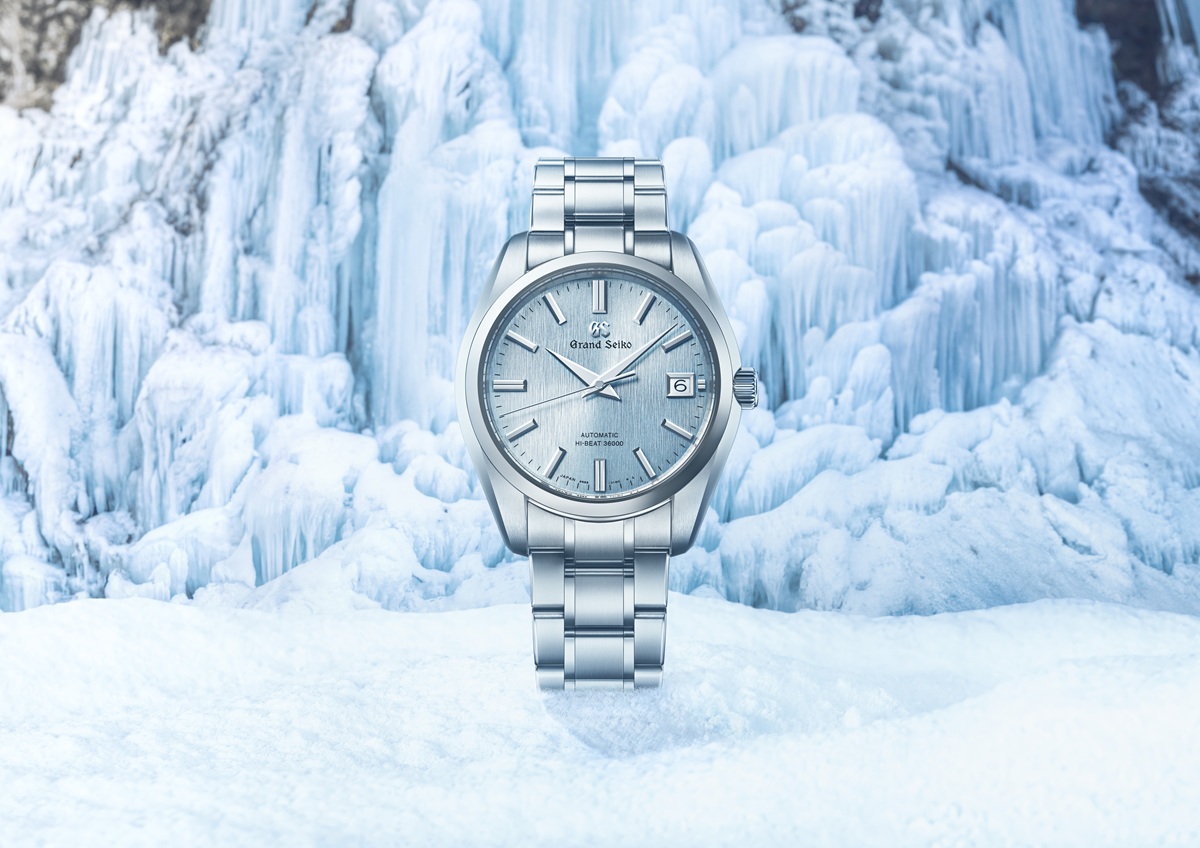
Omega Unveils Limited Edition Planet Ocean At Volvo Ocean Race
An unusual site suddenly appeared over the picturesque port city of Newport, R.I. It was the sun. Fog, cold winds and periods of strong rain dominated the weather during the days leading to the Volvo Ocean Race race held May 19 with some of the greatest competitive sailors in the world. The fog cleared and the sun appeared right before the start, leading to a spectacular day of racing.

The Volvo Ocean yacht race is considered by many professionals in the sailing community to be the most grueling and demanding competition in the world, and for good reason. By the end of the eight-month event, the teams (which consists of anywhere from seven to 11 sailors depending on the makeup of men and women), will have completed 45,000 nautical miles (51,785 miles). The varying weather conditions and other hazards pose an extreme test of mental and physical conditioning where sailors live in stripped down yachts for anywhere from six to 20 days at a time drinking desalinated water, eating freeze-dried food and literally racing non-stop until they reach the next port. Sea conditions can range from stunningly beautiful to agonizingly treacherous.
In addition, all of the Volvo Ocean 70 yachts and all equipment (masts, fittings, etc…) are identical and are of the same weight. To ensure this consistency, the equipment is maintained by a single crew at a workshop set up in each city by race organizers. This places added emphasis on the ability of the sailors and the decisions they make.
To underscore the dangers, during leg 7 of the race, John Fisher, 47, a British citizen who lived in Adelaide, was swept overboard and presumed lost at sea 1,400 miles west of Cape Horn.
The teams on May 19 were competing in one of the 11 “in-port” races at each host city. These are basically sprints, lasting a few hours on a course designed on the harbor. Points for these short races are given based on how each team finishes and will serve a tie breakers. The real racing is out in the open sea.

A tough race demands a tough watch
Omega signed on to the 2017 – 2018 edition of the race as the Official Timekeeper. Raynald Aeschlimann, Omega president and CEO, said the race closely matches the values of Omega as a brand.
“Firstly, there’s a sense of adventure in it. Omega has been to the moon and into the deepest oceans, so we have that same spirit for exploration,” he said by email. “There’s also so much skill, bravery, challenge and beautiful design involved that really appeals to us. Finally, of course, OMEGA has a passionate history of sailing and so it makes sense to support the toughest race on Earth.”
He added that the toughness of watch matches the race and the sailors who participate in it. “It’s a robust watch with a very purposeful ocean design. We know the Volvo Ocean Race sailors get pounded by waves and are constantly getting wet. But we also know they have time in the host cities and need to look good. So the Seamaster Planet Ocean is perfect. It has always been able to work with a wetsuit or something more formal.”
To coincide with this sponsorship, on May 17 the Swiss luxury watch brand unveiled the Omega Seamaster Planet Ocean Deep Black Limited Edition chronograph in Newport. The company also introduced its new sailing ambassadors, New Zealanders Blair Tuke and Peter Burling. Also present were Omega representatives, Jean-Claude Monachon, VP of product development, and Arnaud Michon, U.S. brand president.
As the name suggests, this chronograph recognizes Omega’s role as the Official Timekeeper of the Volvo Ocean Race. It’s limited to 73 pieces, which is in tribute to the first year of the event in 1973.

“The watch is equipped with new technology and with innovations. It’s very important for Omega to come up with new ideas and to achieve these ideas in a product,” Monachon said.
The 45mm timepiece is a divers’ chronograph. However, its robust design and the use of tough, durable ceramic and other materials make it just as capable of withstanding the extreme pressures of ocean sailing. The case is crafted from a single block of ceramic. Red rubber is used to cover the first 15 minutes of the ceramic unidirectional bezel. Liquidmetal (a metal alloy that combines high tensile strength, corrosion resistance, very high coefficient of restitution and anti-wearing characteristics) completes the rest of the diving scale. There’s a helium escape value for dives beyond 250 feet.
The brushed black ceramic dial includes 18k white-gold hour-minute hands and indexes. A red racing ring around the 3 o’clock subdial reads “Volvo Ocean Race 2017/18 Limited Edition” with the assigned number of the 73 watches.
Another innovation for this watch is an oriented caseback through its Naiad Lock system, a locking system for a screwdown caseback that keeps its position. Included on the caseback is the official “Volvo Ocean Race” logo.
The watch sits on a black rubber strap with a ceramic foldover clasp. It is water resistant to 60 bar (600 m / 2,000 ft.) and is powered by Omega’s Master Chronometer caliber 9900.
Young accomplished sailors
Blair Tuke and Peter Burling, Omega’s newest ambassadors, are among the most successful young sailors in the world, both under 30 years of age and are first time participating in the Volvo Ocean Race. They both served on Emirates Team New Zealand, which won the 2017 America’s Cup race. The two sailed together in the 2016 and 2012 Summer Olympics, where they won gold and silver medals, respectively. At the 2016 Olympics they were the flag bearers for New Zealand.

In 2015, the two were named the World Male Sailors of the Year by the International Sailing Federation.
Together they also won numerous World Championship medals in the 49er class, including becoming the first sailors to win four gold consecutive gold medals in (2013 through 2015). They each have earned many honors separately as well.
Tuke referred to the Volvo Ocean Race as “the ultimate endurance battle. It just keeps going on and on for 20-odd days for every minute of every day. There’s a big team aspect to it living in such close quarters, trying to get the most out of the whole team through the good times and the bad times.”
Burling added, “There is no race this grueling in the world.”
Tuke and Burling are wearing the limited edition Planet Ocean and say they use the watches to primarily time their rest to work ratios, which is every four hours. “For 24 hours we need to know the schedule and know by the watch how we’re doing in terms of sleep and work cycles,” Burling said.
Aeschlimann suggests that there’s another reason for the watch’s usefulness. Just like the Omega chronographs that went into space with the astronauts, it is a link to home.
“Wherever they were, they always knew what time it was at home and what their families would be doing at that moment. I like that idea and I think it’s also applicable to sailors who are in the vastness of the ocean and in so many changing time zones,” he said. “But there are also practical purposes especially linked with timing. The Planet Ocean is a Master Chronometer, with the best certified precision in the industry, so the sailors have the best accuracy on board when they need it. I imagine they know the points they need to be at and at what time, so a watch is a great tool to have right on your wrist.”
Although they often sail together, for the 2017 – 2018 Volvo World Ocean Race they are on different teams. Tuke is on board with Mapfre, which is currently in first place, while Burling is with Team Brunel, which is currently in third.
“It’s good to race against each other, it’s a good change up,” Tuke said. We’ve been racing with each other for 10 years and we’re going to continue doing a lot of projects in the future. It’s just a chance for us to do this race and take the opportunities we can.”
The sailors set sail May 20 on the ninth leg of the race to Cardiff, Wales. The 11th and final leg will be completed in June in The Hague, Netherlands.
Aeschlimann says it’s important for OMEGA to produce luxury products that can perform their intended tasks and the Planet Ocean does this.
“To truly be called a product luxury, it has to offer the very best in both beauty and function. It can’t be one or the other. In today’s modern world, people have so many ways to keep track of time. But even with smartphones and tablets, they still expect their watch to be accurate. That’s the intended task and it’s something that Omega will never back down on. In fact, we keep pushing our standards forward. And to ensure luxury, we also keep pushing our standards of design and innovation, ensuring that we have the finest materials at our disposal and the best technologies to rely on.”
 SIGN UP
SIGN UP










